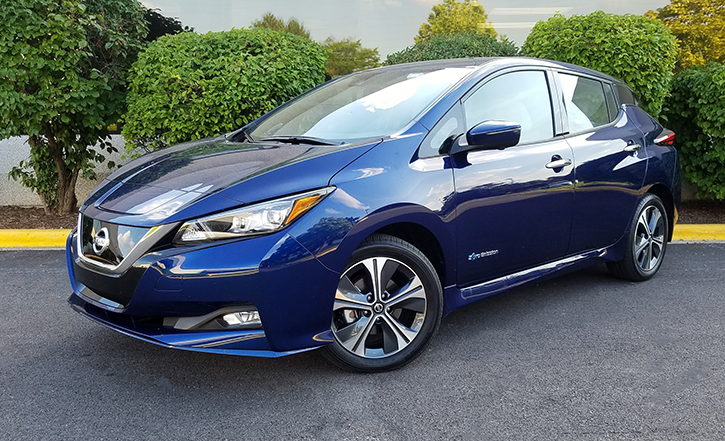
 2019 Nissan Leaf SL Plus
2019 Nissan Leaf SL Plus
Class: Electric Vehicle
Miles driven: 329
Fuel used: NA
| CG Report Card | |
|---|---|
| Room and Comfort | B+ |
| Power and Performance | A- |
| Fit and Finish | B+ |
| Fuel Economy | A |
| Value | B |
| Report-card grades are derived from a consensus of test-driver evaluations. All grades are versus other vehicles in the same class. Value grade is for specific trim level evaluated, and may not reflect Consumer Guide's impressions of the entire model lineup. | |
| Big & Tall Comfort | |
| Big Guy | A |
| Tall Guy | A |
| Big & Tall comfort ratings are for front seats only. "Big" rating based on male tester weighing approximately 350 pounds, "Tall" rating based on 6'6"-tall male tester. | |
| Drivetrain | |
| Engine Specs | 214 horsepower |
| Engine Type | Electric motor |
| Transmission | Automatic |
| Drive | Front-wheel drive |
Real-world fuel economy: NA
Driving mix: 60% city, 40% highway
EPA-estimated fuel economy: 114 MPGe city/94 highway/104 combined
Fuel type: NA
Base price: $42,550 (not including $895 destination charge)
Options on test vehicle: Splash guards ($200), carpeted floor mats and cargo mat ($195), first-aid/emergency kit ($80)
Price as tested: $43,920
Quick Hits
The great: Zippy acceleration; surprisingly nimble handling; competitive pricing among EV rivals
The good: Nicely finished interior in SL trim; good selection of comfort and technology features
The not so good: Can’t quite reach maximum driving range of Chevrolet Bolt or Hyundai Kona EV; rear seat backs don’t fold flat with the cargo floor
More Leaf price and availability information
John Biel
It’s a reasonable expectation in the automotive world that each year’s new version of a given car will offer more than the one before did. It’s practically demanded from a vehicle the manufacturer calls “PLUS”—and in all capitals no less.
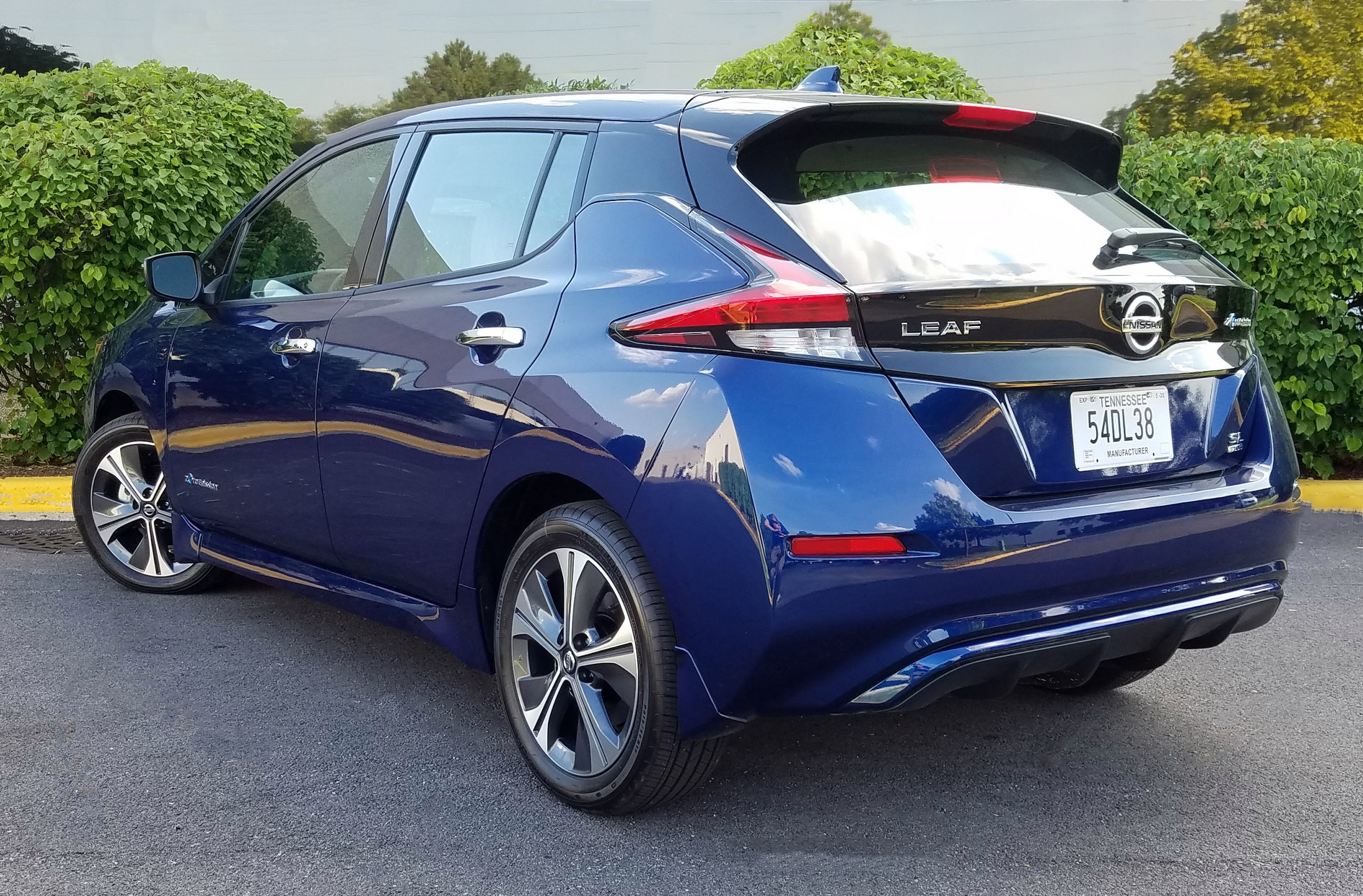
In line with that, Nissan’s full-electric LEAF compact hatchback enters the second year of its second generation with the addition of a second motor-and-battery combination that increases horsepower and range. The new PLUS variant is available in all three LEAF trim levels, and Consumer Guide sampled the enhanced power unit in a Deep Blue Pearl line-topping SL.
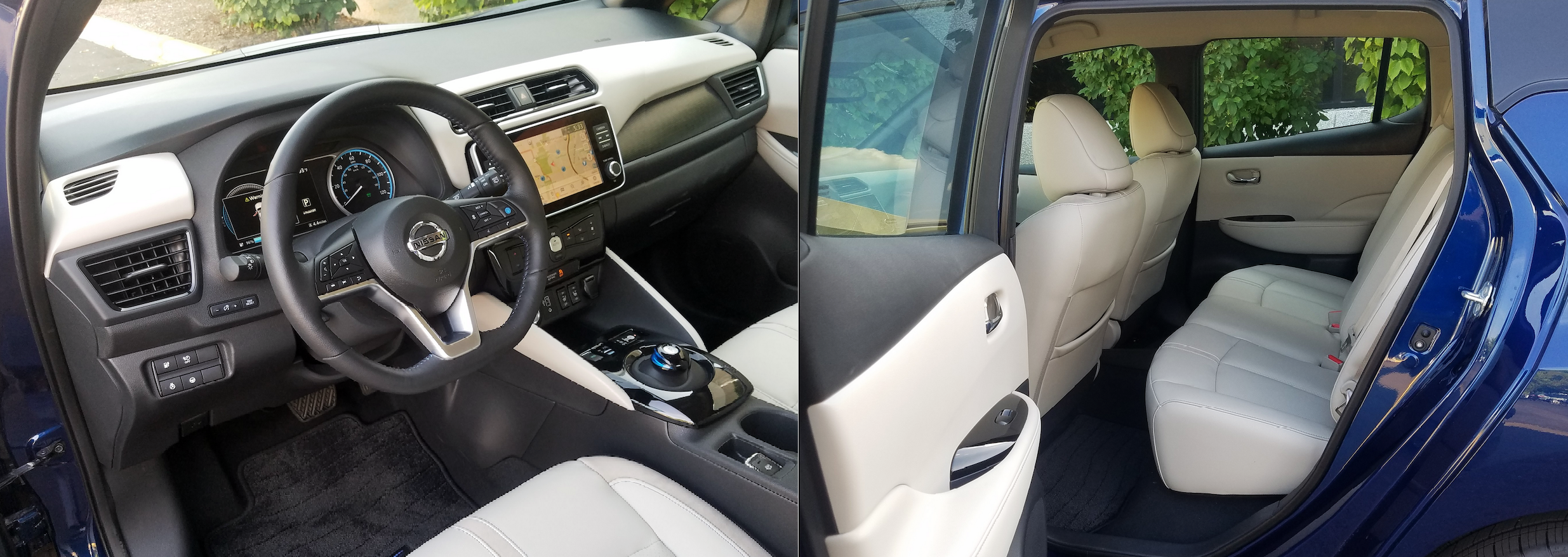
By the numbers, the differences between the standard and PLUS powertrains are stark. The base system—itself a clear improvement over first-gen output—relies on a 110-kW motor and 40-kWh lithium-ion battery to generate 147 hp and 236 lb-ft of torque. The EPA projects its maximum range at 150 miles. PLUS models have a 160-kW motor with battery capacity of 62 kWh, 214 hp and 250 lb-ft, and projected range of 215 miles in SV and SL cars or 226 miles in the entry-level S.
The beefier power unit provides good linear acceleration. It also puts the LEAF PLUS up to the task of rapid expressway cruising speeds. Of course, there’s no traditional engine noise, which makes it easier to hear the little bit of wind and road racket that flares up in speedy expressway driving.
Test Drive: 2019 Jaguar I-Pace
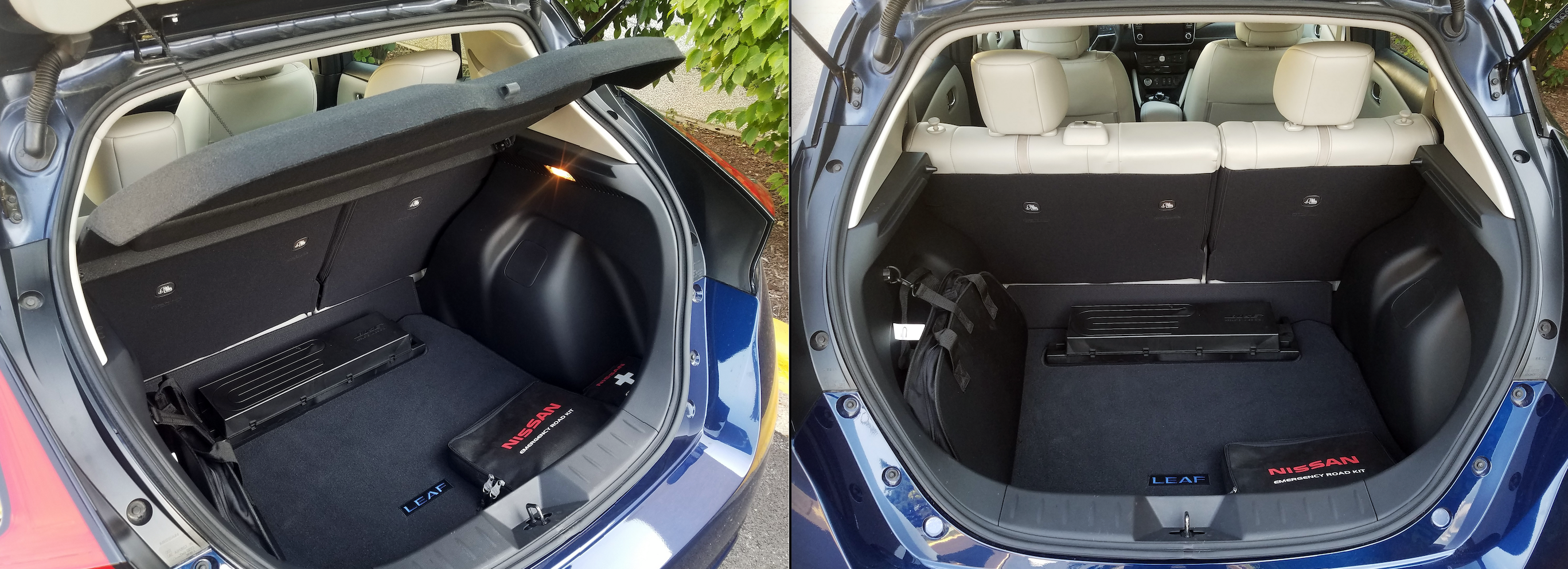
It’s hard to tell which is more appreciated—the added oomph or an operating range that doesn’t begin playing with your mind 10 minutes into your drive. However, taking advantage of the heightened power does come at the expense of some ultimate distance.
When this reviewer had the car, he ran it a couple of times late at night on lightly traveled city expressways, which permitted runs at sustained higher speeds. After four commuting legs for 122 miles, 60 percent of which could have been considered highway-style driving, the LEAF PLUS reported 82 miles of range and 34 percent of charge remaining. Another full round trip seemingly would have been possible, but this driving style was lowering range into the vicinity of 200 miles. Following a partial recharge that restored the battery level to an indicated 70 percent and 166 range miles, another 90.0 driving miles (45 percent city) left the car 25 percent charged with a remaining range of 58 miles.
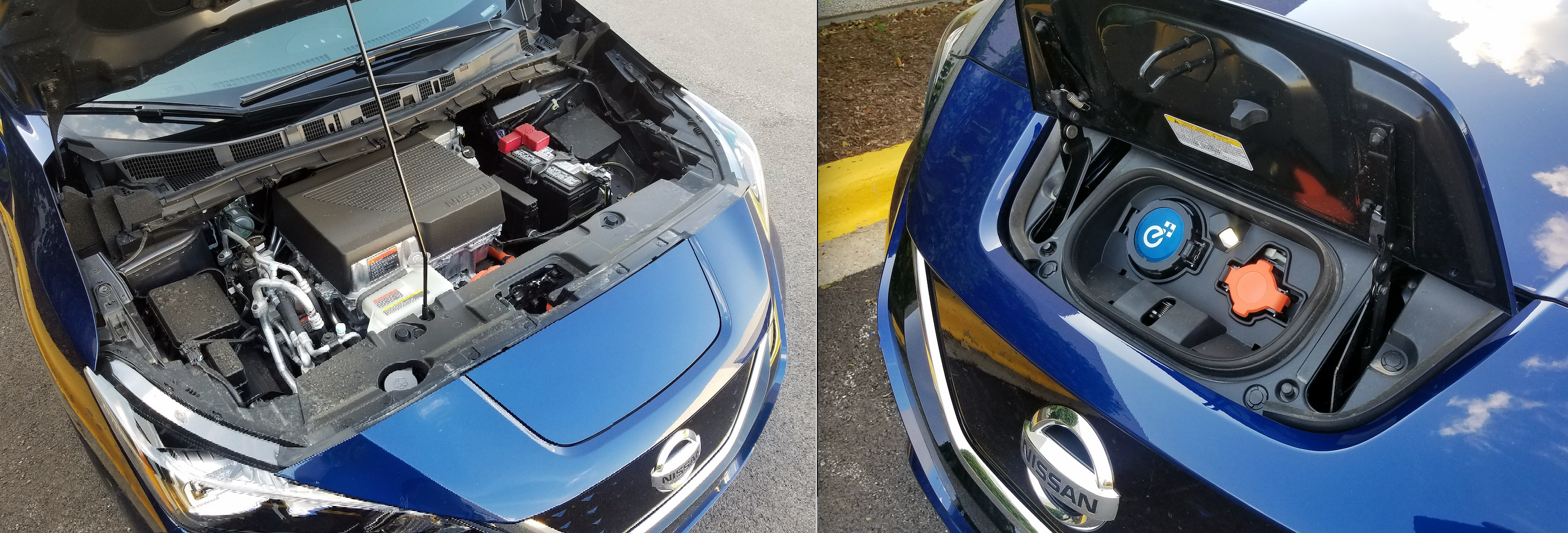
Note that with air temperatures in the 70s and low 80s, air conditioning was being used, but so—at times—were ECO drive mode and the regenerative E-Pedal function that can fully brake the car after some coasting.
When the PLUS was at 34 percent of charge left, it was plugged into CG’s 240-volt “level 2” charger. A complete recharge would have taken eight hours; as it was, 3.5 hours of sucking on the juice box got the battery back to 70 percent. When yours truly next ran the battery down to 24 percent, full replenishment would have required an estimated 9.5 hours.
Guide to Electric Vehicle Charging
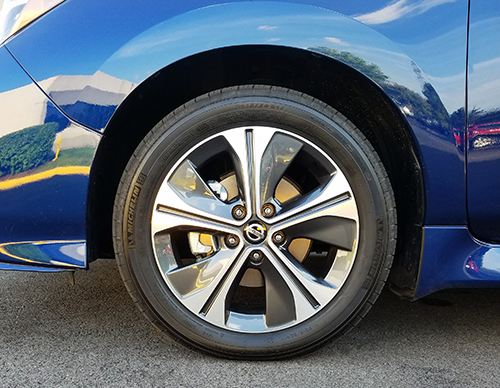
The cost of adding PLUS gear varies by trim level. For the SL, it comes at a $6250 premium, which raised the starting price (with delivery) of the test car to $43,445. A trio of individual options established the final figure at $43,930.
No matter what you pay for a 2019 LEAF, it will include Rear Door Alert, an added standard feature that reminds drivers to check the rear seats (most critically for pets or progeny) when exiting the vehicle. The SL PLUS comes loaded with just about everything the LEAF has to offer. Indeed, its standard-equipment list includes automatic emergency braking with pedestrian detection, Nissan’s Intelligent Lane Intervention system, ProPILOT Assist that pairs adaptive cruise control with automatic lane-centering steering assistance, an electronic parking brake, and automatic headlight high-beam control—a suite of items that constitutes a $650 option package for the lower-powered SL.
Other significant features built into the SL PLUS are leather-covered seats and steering wheel—with front seats and steering wheel heated, 8-way power driver’s seat, 360-degree surround-view camera display, Apple CarPlay/Android Auto functionality, NissanConnect telematics and vehicle-monitoring system, forward-collision warning, blind-spot and rear cross-traffic alerts, driver-alertness monitor, cargo cover, 8-inch touchscreen, navigation, 7-speaker Bose sound system, and HD and satellite radio. Exterior details are 17-inch alloy wheels, heated power mirrors, a charge-port light, and LED headlights and fog lights.
What hasn’t changed from the 2018 introduction of the generation-2 LEAF is its nimble handling, smooth ride, and sense of roominess for its overall size. Cargo space is pretty good, and gets better when the 60/40-split rear seats are down. However, it is still subject to limited personal-item storage for passengers’ stuff, and a tilt-only adjustable steering wheel that may force some drivers to settle for the best deal they can get in terms of comfort and driving position. On balance, though, it is an impressive electric-vehicle entry that has indeed delivered more in its second year.
9 Electric Car Companies To Watch
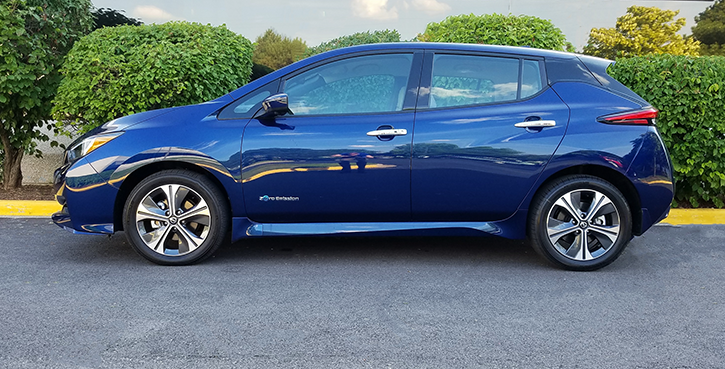
2019 Nissan Leaf Plus


